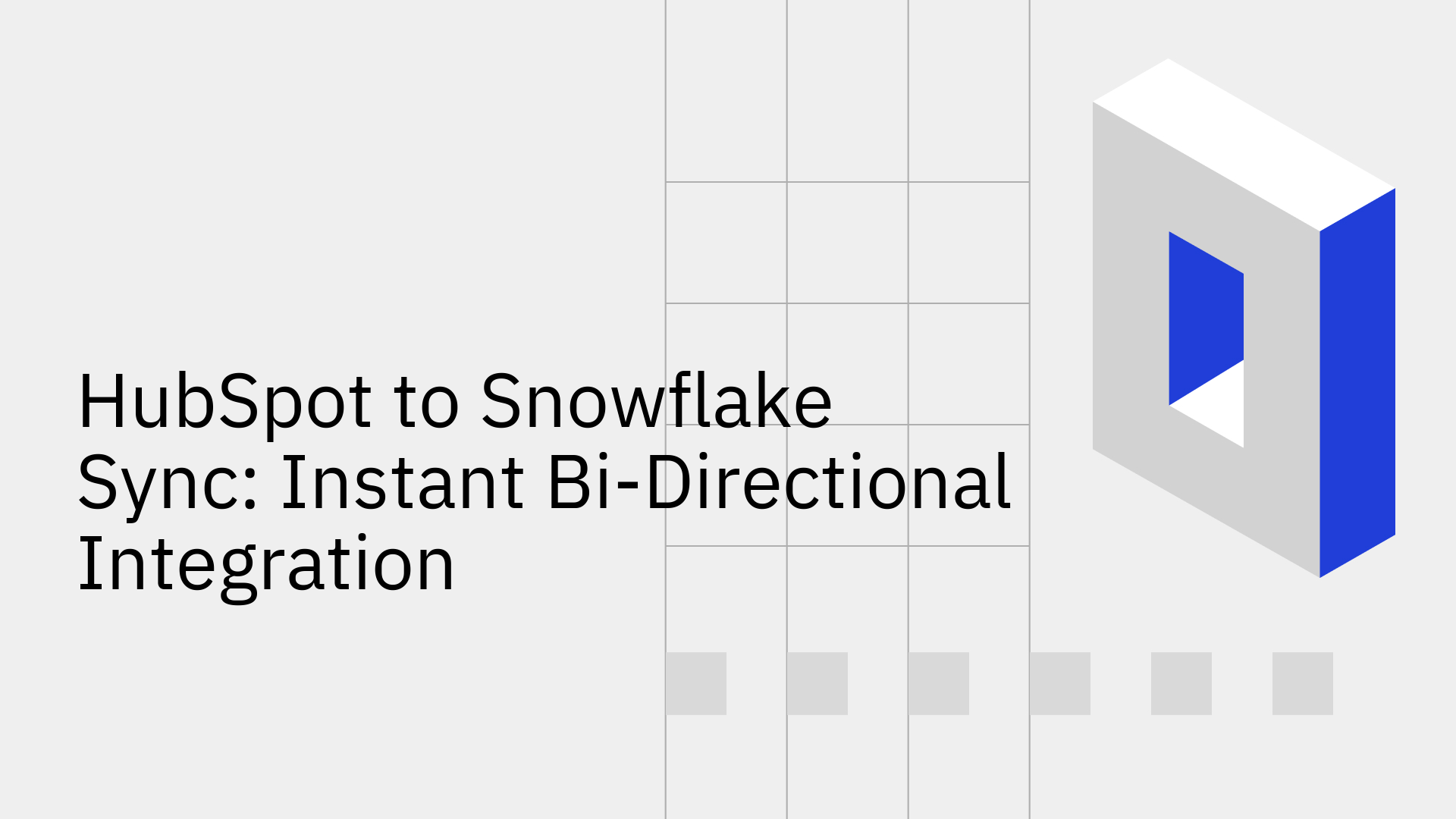
In today's data-driven world, connecting your HubSpot customer data with your Snowflake data warehouse isn't just an advantage it's essential. Unifying these platforms allows you to unlock advanced analytics, create a single source of truth for all customer activity, and power your business intelligence with live data. Yet, many businesses are stuck using outdated methods like manual CSV uploads or slow, batch-based data pipelines. These approaches are plagued by delays, errors, and high maintenance costs.
It's time to move beyond clunky, unreliable integrations. The modern solution is a real-time, bi-directional sync that transforms HubSpot and Snowflake into a single, perfectly unified system.
Many companies try to connect HubSpot and Snowflake with traditional methods, only to find they create more problems than they solve. These approaches are inefficient, don't scale, and fail to provide the real-time data modern teams need to succeed.
Most data tools offer simple, one-way data pipelines. ETL (Extract, Transform, Load) tools move data from HubSpot to Snowflake, while Reverse ETL tools push it back. This immediately creates two significant problems:
Using HubSpot’s built-in sync features or relying on manual exports introduces its own set of critical issues [6]. While these methods might seem cheap at first, they quickly become a major bottleneck for growth.
Instead of just moving data between systems, imagine if HubSpot and Snowflake operated as one. That is the power of a true bi-directional, real-time sync. Stacksync was built from the ground up to deliver this, transforming your separate tools into a single, powerful, and cohesive data ecosystem.
True bi-directional, or two-way, sync means that any data created, updated, or deleted in HubSpot is instantly reflected in Snowflake, and any changes in Snowflake can be mirrored back to HubSpot in milliseconds. This isn't just two separate one-way pipelines; it's a single, intelligent sync that guarantees your data is always consistent across both platforms. The result is a perpetually up-to-date, single source of truth for your entire organization. You can learn more in our complete guide to bidirectional integration.
Stacksync delivers an enterprise-grade solution that is powerful yet surprisingly simple.
Complete Data Sync, Guaranteed: Stacksync provides out-of-the-box support for all your HubSpot data, including standard objects, custom objects, and custom properties. Your entire data model is synced completely and accurately, with no exceptions.
Unlock the full potential of your data by creating a seamless, real-time sync between HubSpot and Snowflake.
Stop waiting for engineering resources. With Stacksync, you can launch a production-ready, bi-directional sync in less time than it takes to make a cup of coffee.
See how easy it is for yourself by joining one of our live technical demos and watch the platform in action.
When HubSpot and Snowflake are perfectly in sync, you unlock powerful new capabilities for every team in your organization.
Free your data team from the tedious work of building and maintaining fragile data pipelines. With a live stream of HubSpot data flowing directly into Snowflake, they can build a true real-time data warehouse. This lets them focus on what they do best: finding valuable insights with BI tools like Tableau or Power BI, instead of fixing broken pipelines.
Create a true 360-degree view of your customers. RevOps teams can enrich HubSpot records with product usage data, financial information, or lead scores calculated in Snowflake. This valuable data can then be synced back to HubSpot in real time, empowering your sales team with the latest information, automating lead scoring with incredible accuracy, and building hyper-targeted account lists.
Deliver highly personalized customer experiences at scale. Marketing teams can use the live data sync to trigger automated campaigns based on real-time customer behavior. For example, you could instantly trigger a re-engagement email in HubSpot the moment a customer's activity in your product (tracked in Snowflake) signals they might be losing interest, or automatically deliver marketing materials based on their updated HubSpot subscription status.
Choosing the right tool is critical. While many platforms claim to offer integration, their capabilities and limitations vary widely. Here’s a quick comparison:
While other tools can move data around, Stacksync is the only solution built to truly unify HubSpot and Snowflake into a single, cohesive system that is always in sync.
The limits of traditional, one-way data pipelines are clear. They are slow, unreliable, and hold your business back. To compete today, your teams need access to live, consistent data across all their tools. A real-time, bi-directional HubSpot to Snowflake sync is no longer a "nice-to-have"—it's a core requirement for operational excellence.
Stacksync provides the most robust, scalable, and easy-to-use platform to achieve this unification. Empower your teams, supercharge your analytics, and build a truly data-driven organization. Explore our HubSpot two-way sync integration and discover what's possible.
Ready to unlock the true power of your data? Book a Demo or Start Your Free Trial Today.